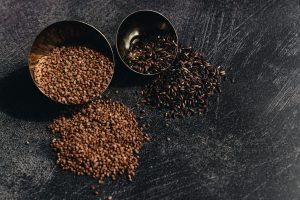The Unexpected Power of Ugly Produce in Gourmet Cooking
The world of gourmet cooking is known for its elegance and sophistication, with its focus on using the freshest and most visually appealing ingredients. However, there is an unexpected hero that is gaining recognition in the culinary world: ugly produce. Yes, you read that right, the misshapen, blemished and oddly sized fruits and vegetables that are often discarded by farmers and overlooked by consumers are now making a name for themselves in gourmet cooking. Despite its less-than-perfect appearance, ugly produce has a surprising power that is changing the game in the kitchen. Let’s dig deeper and discover the unexpected power of ugly produce in gourmet cooking.
The Rise of Ugly Produce
The trend of using ugly produce in gourmet cooking gained popularity in recent years as a part of the larger movement towards reducing food waste. It is estimated that about 40% of the food produced in the United States goes to waste, with a large portion of it being imperfect produce that is deemed not suitable for sale in supermarkets. As a response to this staggering amount of food waste, various organizations and individuals have started to shine a spotlight on the hidden potential of ugly produce.
Ugly produce is usually categorized as “ugly” due to factors such as their size, shape, color, or imperfections. These characteristics are not a reflection of the quality or taste of the produce, but rather a result of natural variations in growing conditions. Farmers often face challenges in selling these ugly produce as they do not meet the beauty standards set by retailers and consumers. However, with the rising awareness of food waste, there has been a shift in mindset towards utilizing these perfectly edible but “imperfect” fruits and vegetables.
The Unexpected Power of Ugly Produce
So, what exactly is the power of ugly produce in gourmet cooking? Well, for starters, it’s not just about reducing food waste, although that is a significant benefit in itself. It’s about the unique and flavorful qualities that these “ugly” fruits and vegetables possess. Due to their odd shapes and sizes, their flavors are often more concentrated and intense. For example, a misshapen carrot or a bruised apple may have a stronger and sweeter taste compared to their perfectly formed counterparts.
Moreover, since ugly produce is often sold at a lower price, it can be a more affordable option for gourmet cooking. This allows chefs and home cooks to experiment with a wider range of ingredients and create unique and creative dishes without breaking the bank. In addition, the use of ugly produce also promotes diversity in the types of produce that are consumed, leading to a more varied and nutritious diet.
The Impact on Sustainability and the Environment
Aside from its culinary benefits, incorporating ugly produce into gourmet cooking also has a positive impact on sustainability and the environment. By using imperfect produce, less food goes to waste, reducing the carbon footprint of the food industry. It also means fewer resources, such as water and energy, are used to grow produce that will ultimately end up in landfills. Additionally, the less-than-perfect appearance of ugly produce also challenges the beauty standards set by the food industry, promoting a more inclusive and realistic perception of food.
How to Incorporate Ugly Produce in Gourmet Cooking
Now that we understand the unexpected power of ugly produce, you may be wondering how you can incorporate it into your own gourmet cooking. The first step is to change our mindset towards these fruits and vegetables, and recognize their potential and value. You can start by seeking out farmers’ markets or local grocers that sell ugly produce, or even growing your own at home. There are also subscription services that specifically deliver imperfect produce to your doorstep.
As for the actual cooking, the possibilities are endless. Ugly produce can be used in a variety of dishes, from soups and stews to salads and even desserts. The key is to embrace these unique flavors and incorporate them into your recipes. You may even find that you prefer using ugly produce in your cooking as it adds a touch of unpredictability and surprise to your dishes.
In Conclusion
Ugly produce may have been overlooked and underestimated in the past, but its unexpected power in gourmet cooking is finally gaining recognition. Not only does it reduce food waste and promote sustainability, but it also adds new dimensions to culinary experiences and challenges our perceptions of food. So the next time you come across an oddly shaped or blemished fruit or vegetable, don’t pass it by. Embrace its imperfections and discover the unexpected power of ugly produce in gourmet cooking.










